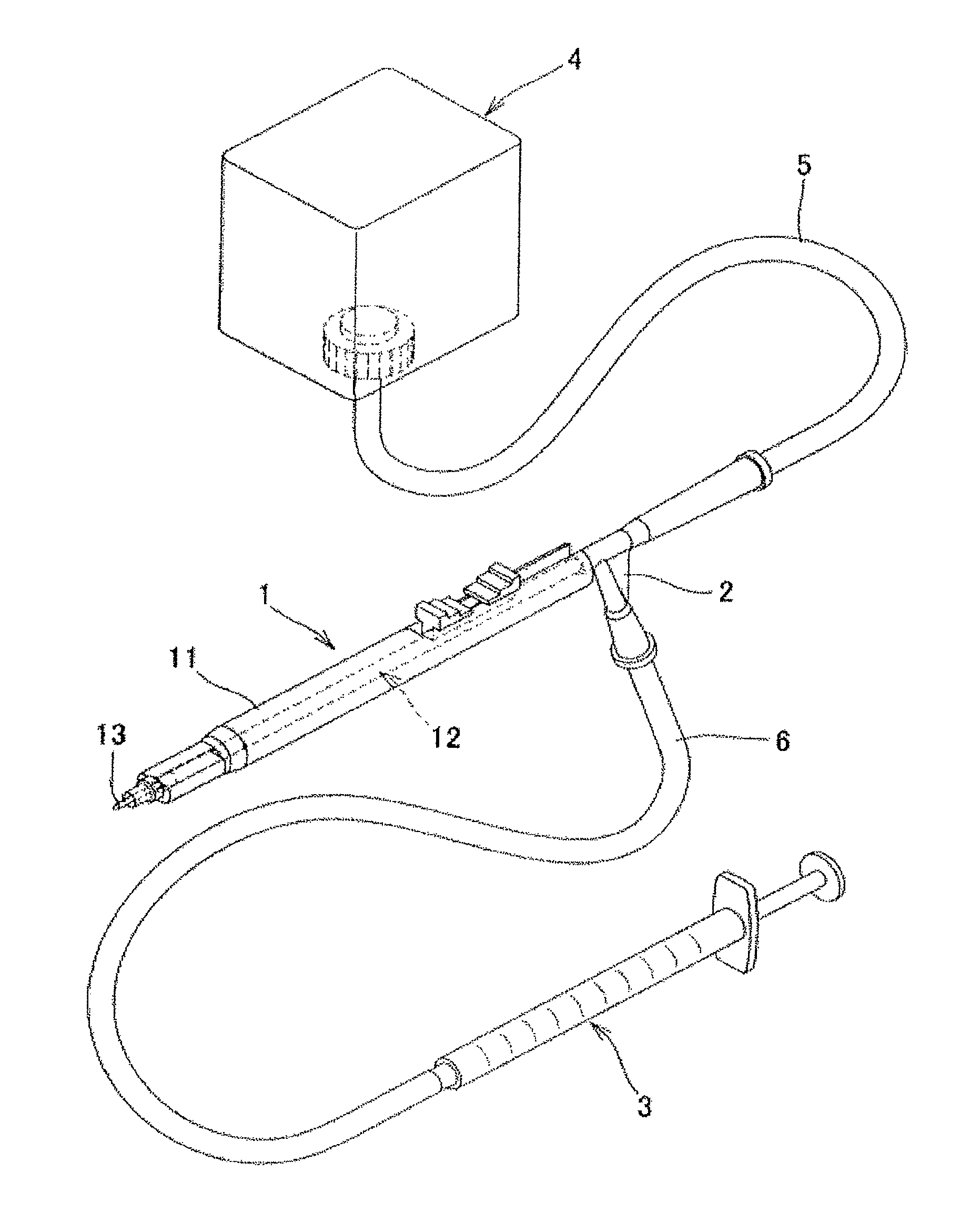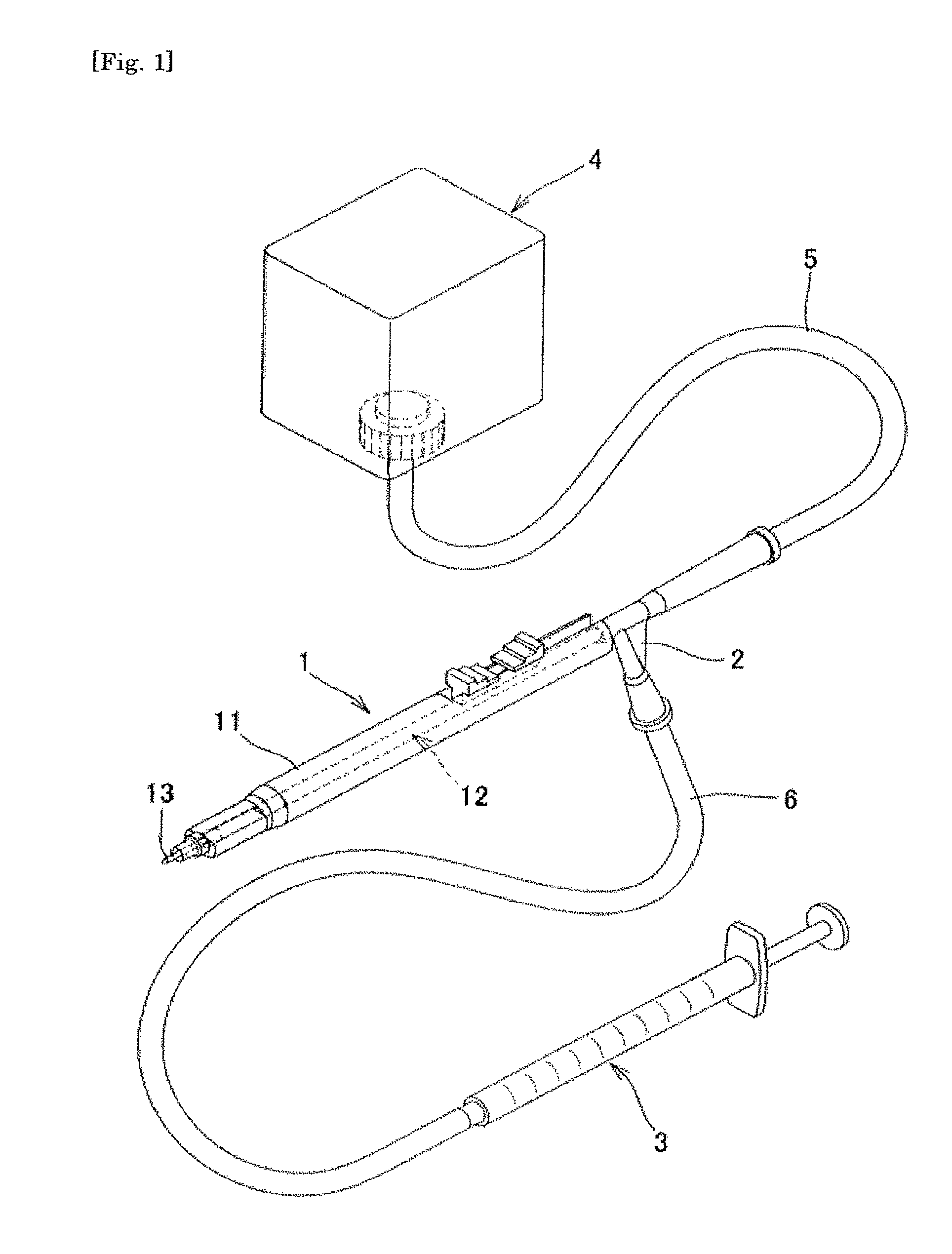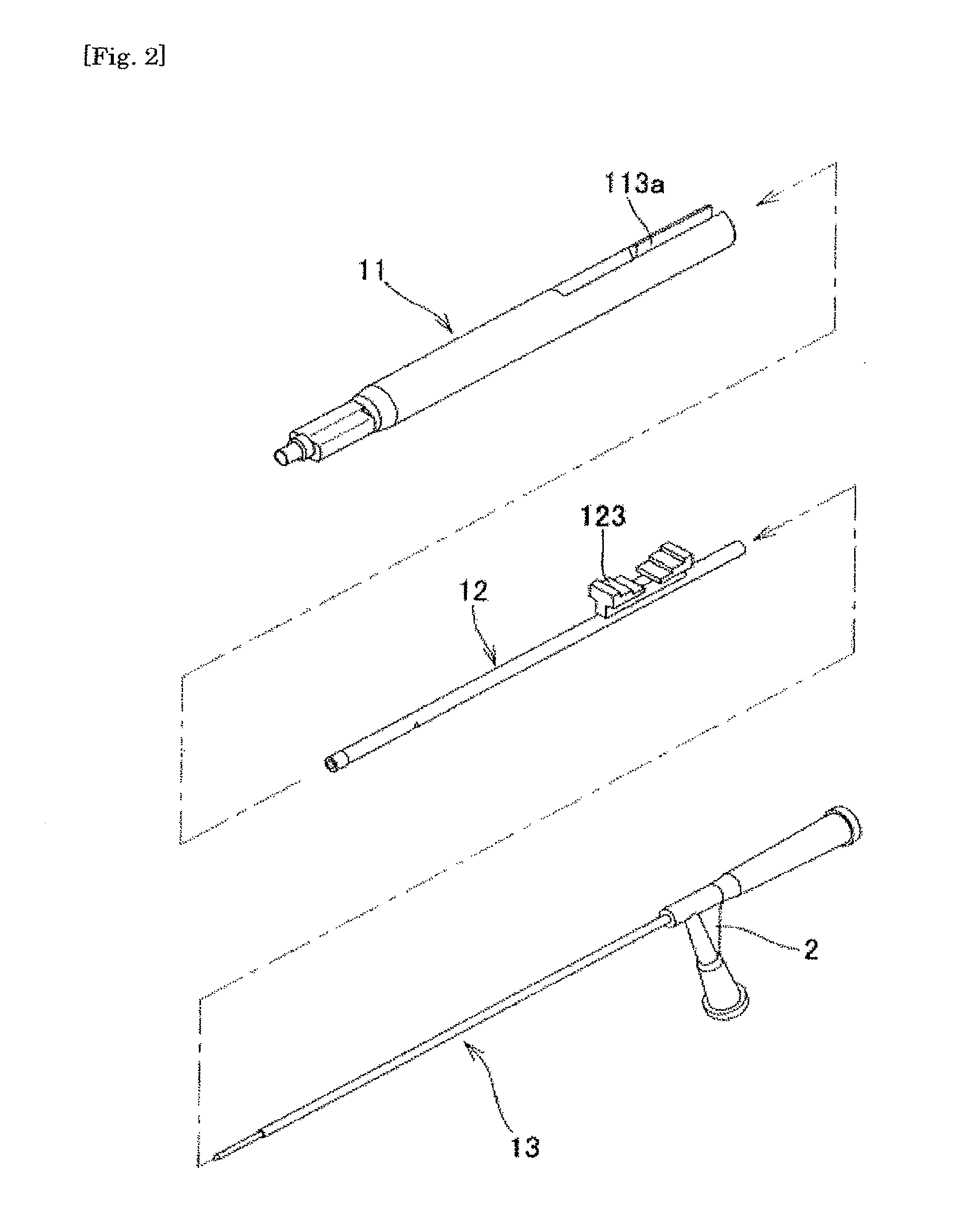Injector for eye
an eye and injector technology, applied in the field of eye injectors, can solve the problems of reduced density of corneal endothelial cells, difficult light transmission, and serious eye impairment, and achieve the effects of easy insertion, no damage, and easy delivery
- Summary
- Abstract
- Description
- Claims
- Application Information
AI Technical Summary
Benefits of technology
Problems solved by technology
Method used
Image
Examples
example 1
[0258]
[0259]Fresh piglet eyeballs were purchased from a public corporation for meat-packing and the inner layers of the corneal were carefully peeled. Then, the deep lamellar was punched using a trepan (a diameter of 8 mm) to prepare the sheet-shaped graft (the endothelial cell layer, the Descemet's membrane, and about ¼ of the corneal stroma).
[0260]1>
[0261]By using the injector for an eye #1 with a surface coating of polyethylene glycols shown in FIG. 33 (slidability: a rubber packing), the prepared graft was inserted into a piglet eyeball to deliver to backside of the cornea. In the following transplant Examples, the piglet eyeballs whose intraocular pressures were equally kept even when the eyeball walls were pressured with tweezers were used.
[0262]A small incision with a size of about 5 mm was made about 0.5 mm away from the corneal margin of the piglet eyeball to communicate with the anterior chamber. The graft was placed on the hinge structure of the outer cylinder (FIG. 34), ...
example 2
[0265]2>
[0266]By using the injector for an eye #2 with a surface lubricious coating of polyethylene glycols shown in FIG. 41 (slidability: a rubber packing), the prepared graft was inserted into the piglet eyeball to deliver to the backside of the cornea.
[0267]In the same manner as in Example 1, a small incision with a size of about 5 mm was made about 1 mm away from the corneal margin of the piglet eyeball to communicate with the anterior chamber. A drop of hyaluronic acid and a graft was placed on the graft holding part of the graft holding structure having the middle cylinder and the inner cylinder (FIG. 42), and the graft holding structure was slowly installed in the outer cylinder having a trumpet-shaped inner structure (FIGS. 43 and 44). Then, the graft holding structure was slid to slide the graft to the leading end of the outer cylinder.
[0268]The injector was pointed so that the major axis of the graft would be up with respect to the insert direction and the edge would be do...
example 3
[0270]3>
[0271]The insertion test was performed in the same manner as in Examples 1 and 2 except that the injector #3 was used. The injector #3 was the injector #1 having a surface without lubricious coating and its slidability was controlled by only each cylinder diameter (compliance). The obtained result was similar to those of Examples 1 and 2 (Table 1).
[0272]It was shown that the object can be achieved by even an untreated surface with lubricious coating and slide control with the cylinder diameter.
PUM
 Login to View More
Login to View More Abstract
Description
Claims
Application Information
 Login to View More
Login to View More - R&D
- Intellectual Property
- Life Sciences
- Materials
- Tech Scout
- Unparalleled Data Quality
- Higher Quality Content
- 60% Fewer Hallucinations
Browse by: Latest US Patents, China's latest patents, Technical Efficacy Thesaurus, Application Domain, Technology Topic, Popular Technical Reports.
© 2025 PatSnap. All rights reserved.Legal|Privacy policy|Modern Slavery Act Transparency Statement|Sitemap|About US| Contact US: help@patsnap.com



